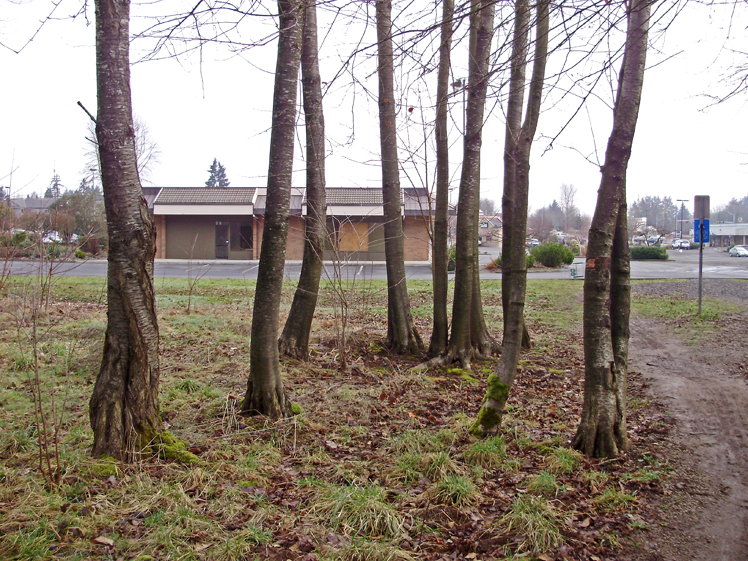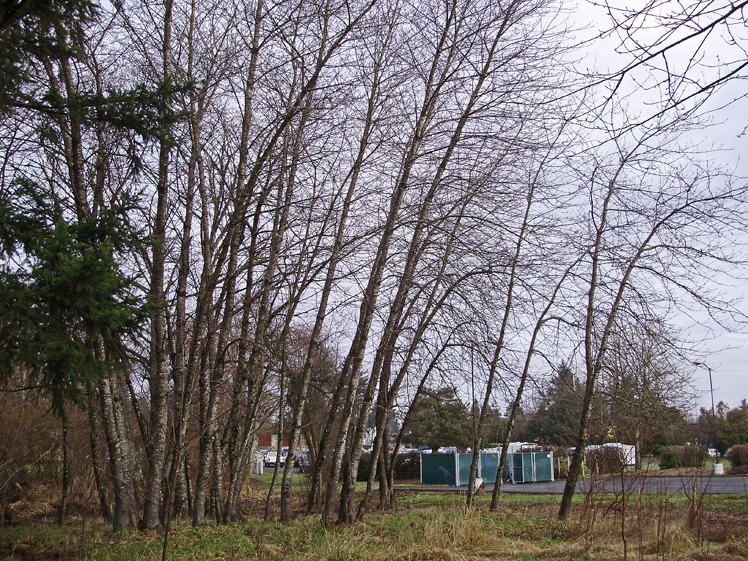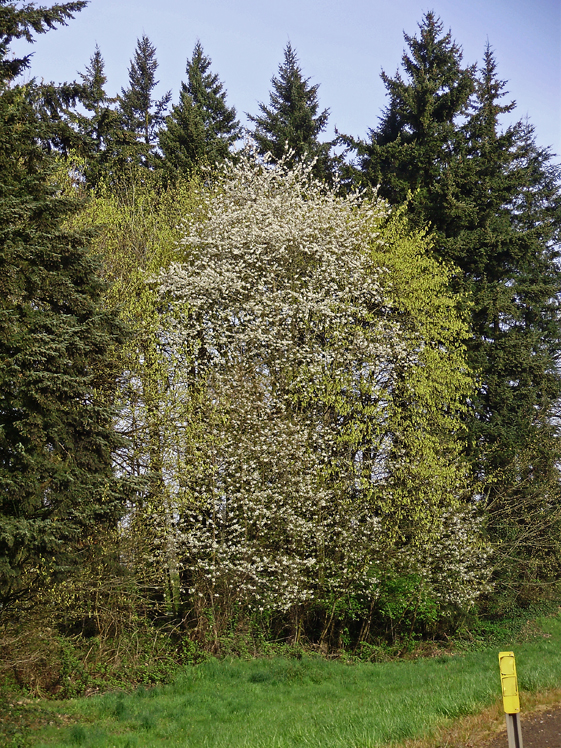

At the core of the largest thicket is a large bird cherry, which is most likely the source the other seedlings and many of the root suckers around it. In both pictures notice the small saplings (around 4-7 ft. (1.2-2 m.) high) both within the thicket and in full sun in the open field. This indicates a species able to thrive both in deep shade and full sun.
A chart detailing comparitive identification of the three commonest cherries of the Pacific Northwest follows the pictures. Another picture of a large bird cherry follows the chart.

|

|
 |
Bird Cherry, Fruit Cherry Prunus avium Eurasian, introduced |
Bitter Cherry Prunus emarginata mollis Native |
Choke Cherry Prunus virginianum demissa Native |
| Leaves | Average length about 5 in. (13 cm), and about half that wide; coarse teeth; strong central vein; usually some red fall color except in deepest shade. | Average length around 2.5 in. (6 plus cm), narrow, 1/3 to 1.5 in. (1-4 cm) wide; finely toothed; pubescent below and on leaf stems; yellow fall color. | Average length nearly 3 in. (7.5 cm) long, 1 to 2 in. (2.5-5 cm) broad; finely toothed; dark green above, pale and pubescent below; yellow fall color. |
| Flowers and Fruit |
Average more than one in. (2.6 cm) wide, in few flowered clusters (usually less than 5) before the leaves. Fruit large, variable, usually red, to 7/8 in. (2.25 cm), few to a cluster. | 5 to 12 1/3 to 1/2 in. (.8 to 1.25 cm) flowers in a roundish to flat topped cluster, opening with or just before the leaves. Fruit to 1/2 in. (1.25 cm) in small clusters, bright red aging to black. | Blossoms in long narrow racemose clusters of 15 to 30 1/3 to 1/2 in. (.8 to 1.25 cm) flowers, opening after the leaves. Fruit to 1/3 in. (.8 cm) in drooping clusters, bright red aging to black. |
| Growth Habit |
Large, can exceed 50 ft. (15 m.), European references state up to 100 ft. (30 m.), dominant central trunk, often strongly branched when in open; twigs thick and brittle. Trunk to 5 ft. (1.5 m.) in diameter. Bark reddish. Reproduces by seed and root suckers. Very shade tolerant and can crowd out native trees and shrubs. The fruit-bearing orchard tree. Ecologically a climax species. | Medium sized, dominant central trunk, up to 50 or rarely 60 ft. (15-18 m.); branches are light, pliable; trunks to 10 in. (25 cm). Root suckers can produce thickets. Bark reddish when young but grey on oldest stems. Primarily sun-loving, can shade out in Northwest forest conditions. A pioneer species especially on moist soils. Short lived. Ecologically a secessional species. | Suckering, usually shrubby, sometimes treelike up to about 18 or rarely 40 ft. (5.5-12 m.), branches light, trunks to 12 in. (30 cm), usually smaller, often thicket forming. Bark greyish, but reddish when young. Primarily sun-loving, can shade out in Northwest forest conditions. Ecologically an edge or ecotone plant. |
Large bird cherry competing with bigleaf maple

All material copyright 2009 by Bryon Boyce